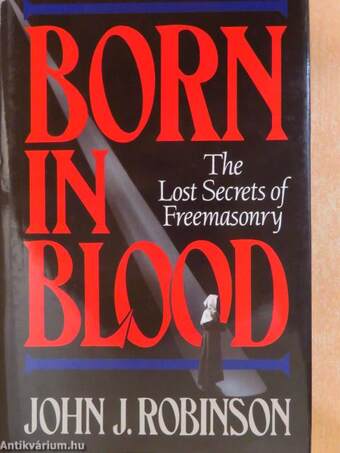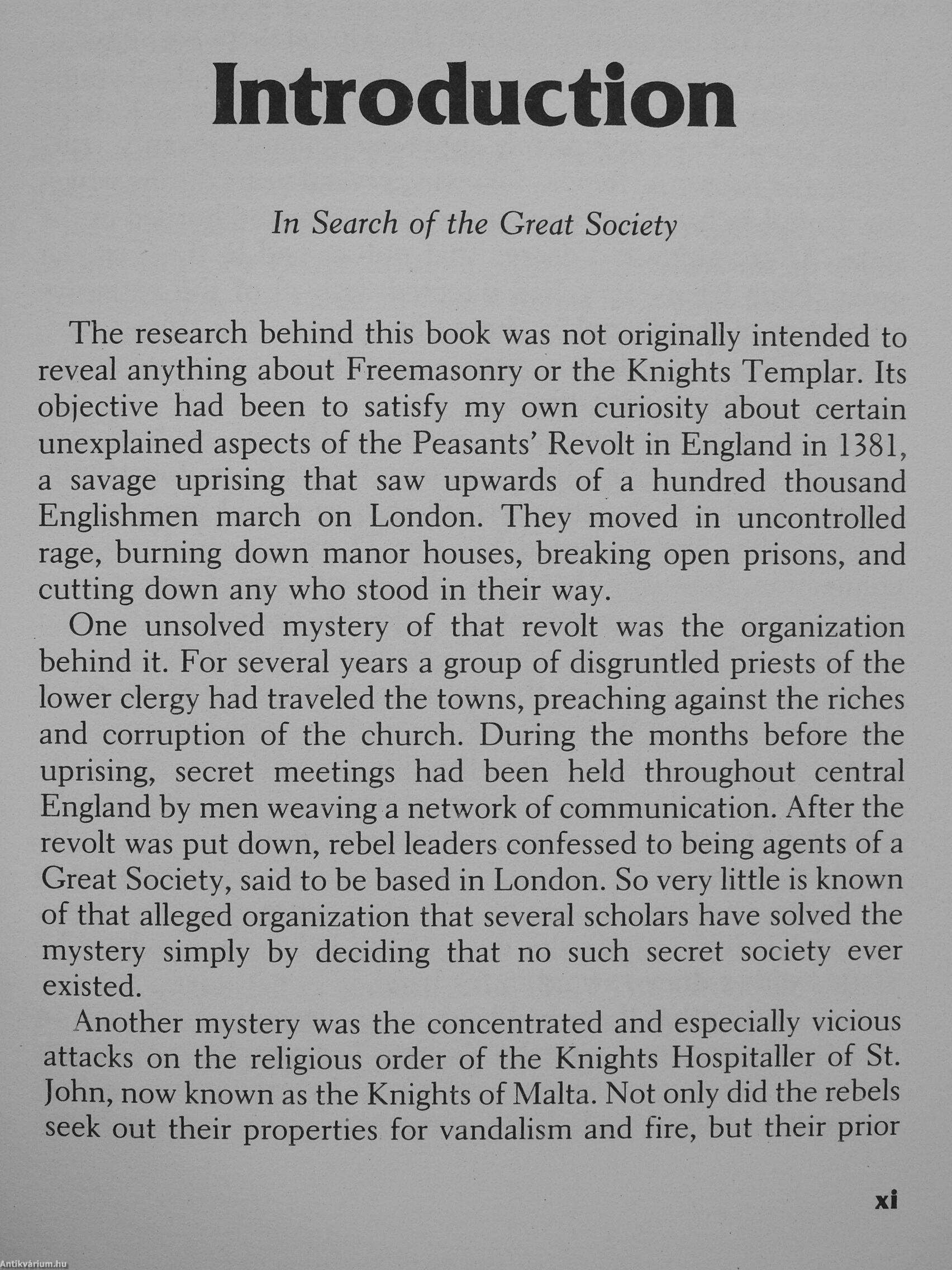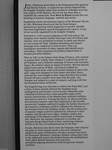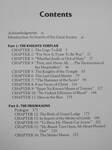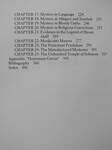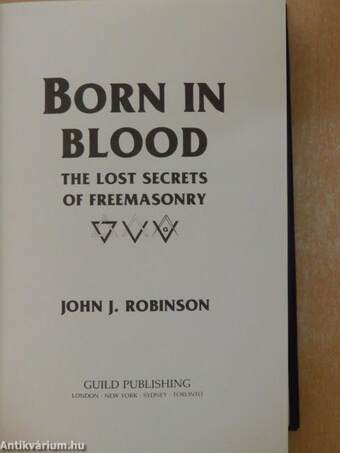1.061.471
kiadvánnyal nyújtjuk Magyarország legnagyobb antikvár könyv-kínálatát

VISSZA
A TETEJÉRE
JAVASLATOKÉszre-
vételek
Born In Blood
The Lost Secrets of Freemasonry
| Kiadó: | Guild Publishing |
|---|---|
| Kiadás helye: | London |
| Kiadás éve: | |
| Kötés típusa: | Fűzött kemény papírkötés |
| Oldalszám: | 376 oldal |
| Sorozatcím: | |
| Kötetszám: | |
| Nyelv: | Angol |
| Méret: | 24 cm x 16 cm |
| ISBN: | |
naponta értesítjük a beérkező friss
kiadványokról
naponta értesítjük a beérkező friss
kiadványokról
Előszó
TovábbFülszöveg
John J Robinson gives back to the Freemasons their glorious and bloody history. A suspicion has always lingered that the Knights Templar rather than médiéval craftsmen were the true origins of the Masons, but no one has been able to establish the connection. Now Born in Blood reveals the true meaning of masonic language, symbols and myths.
Examining certain unexplained aspects of the Peasants' Revolt of 1381, Robinson discovered that far from being a spontaneous uprising which happened to involve 100,000 low-born Englishmen spread throughout the country, it was in fact secretly organised by the Knights Templar.
Founded in 1118 to protect pilgrims to the holy places, the Templars were warrior monks who kept vows of celibacy and chastity, were not permitted to retreat in battle and obeyed no-one except the Pope. Templar initiations and chapter meetings were conducted in total secrecy. They ran intelligence networks of codes, signais and identification techniques. Their réputation... Tovább
Fülszöveg
John J Robinson gives back to the Freemasons their glorious and bloody history. A suspicion has always lingered that the Knights Templar rather than médiéval craftsmen were the true origins of the Masons, but no one has been able to establish the connection. Now Born in Blood reveals the true meaning of masonic language, symbols and myths.
Examining certain unexplained aspects of the Peasants' Revolt of 1381, Robinson discovered that far from being a spontaneous uprising which happened to involve 100,000 low-born Englishmen spread throughout the country, it was in fact secretly organised by the Knights Templar.
Founded in 1118 to protect pilgrims to the holy places, the Templars were warrior monks who kept vows of celibacy and chastity, were not permitted to retreat in battle and obeyed no-one except the Pope. Templar initiations and chapter meetings were conducted in total secrecy. They ran intelligence networks of codes, signais and identification techniques. Their réputation for probity helped them to become powerful bankers.
Then in 1307, at the behest of the King of France, who wanted to acquire their wealth, Pope Clement V ordered the arrest of ail Templars, and a hideous campaign of torture and execution began. He ordered 'spare no means of torture'. Red hot pincers nipped away pieces of flesh, cold pincers pulled out fingernails and teeth, with tooth sockets probed to add to the pain. Legs were strapped to iron frames and oiled, then a charcoal fire was brought to bear. Some had their feet totally burned off and a number went mad with the pain. One Templar was helped to a court of enquiry, carrying with him the blackened bones of his feet.
The English king was reluctant to enforce the Papal Bull, and a delay of three months allowed the Templars to go underground and become a secret society. Historian John J Robinson believed this a more plausible origin of the secrecy characteristic of the Masons than cathedral builders, who had no need of it. Testing his theory, he discovered that the notorious masonic oaths had originated in the horrible tortures the Templars suffered if caught. He further discovered that masonic vocabulary could be explained by reference to the Norman French the Templars spoke; that the architecture of masonic lodges could be explained by reference to their temples; and that the secret signs, symbols, clothes and mythology of the Masons could be traced back to Templar lore. Moreover, the masonic injunction to worship one Supreme Being related back to their continuing religious beliefs in the face of excommunication by the Pope.
Finally, Robinson also shows how the Templars, who adopted the guise of stone masons much as the early Christians adopted the guise of fishermen, became a natural focal point for Protestant dissidents, forming a shadow ruling class; then in the eighteenth century the Masons became the establishment itself, many British monarchs and American présidents aligning themselves with the glorious Templar tradition. Vissza
Témakörök
- Idegennyelv > Idegennyelvű könyvek > Angol > Művelődéstörténet
- Idegennyelv > Idegennyelvű könyvek > Angol > Vallás > Kereszténység
- Idegennyelv > Idegennyelvű könyvek > Angol > Történelem > Egyéb
- Művelődéstörténet > Eszmetörténet > Vallás
- Paratudományok > Spiritizmus > Misztika
- Történelem > Idegennyelvű > Angol
- Történelem > Egyéb
- Idegennyelv > Idegennyelvű könyvek > Angol > Paratudományok > Egyéb
- Vallás > Kereszténység > Egyéb
- Vallás
John J. Robinson
John J. Robinson műveinek az Antikvarium.hu-n kapható vagy előjegyezhető listáját itt tekintheti meg: John J. Robinson könyvek, művekMegvásárolható példányok
Nincs megvásárolható példány
A könyv összes megrendelhető példánya elfogyott. Ha kívánja, előjegyezheti a könyvet, és amint a könyv egy újabb példánya elérhető lesz, értesítjük.



